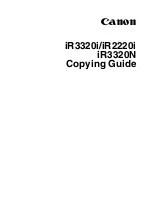
–
Have bent corners
–
Have rough, cockle, or laid finishes
•
Adjust the width guides to fit the width of the envelopes.
Note:
A combination of high humidity (over 60%) and high printing temperature may wrinkle or seal envelopes.
Tips on using labels
Print samples on the labels being considered for use before buying large quantities.
Note:
Use only paper label sheets. Vinyl, pharmacy, and two
‑
sided labels are not supported.
For more information on label printing, characteristics, and design, see the
Card Stock & Label Guide
available at
http://support.lexmark.com
.
When printing on labels:
•
Use labels designed specifically for laser printers. Check with the manufacturer or vendor to verify that:
–
The labels can withstand temperatures up to 240°C (464°F) without sealing, excessive curling, wrinkling, or
releasing hazardous emissions.
–
Label adhesives, face sheet (printable stock), and topcoats can withstand up to 172
‑
kPa (25
‑
psi) pressure without
delaminating, oozing around the edges, or releasing hazardous fumes.
•
Do not use labels with slick backing material.
•
Use full label sheets. Partial sheets may cause labels to peel off during printing, resulting in a jam. Partial sheets
also contaminate the printer and the cartridge with adhesive, and could void the printer and toner cartridge
warranties.
•
Do not use labels with exposed adhesive.
•
Do not print within 1 mm (0.04 inch) of the edge of the label, of the perforations, or between die
‑
cuts of the label.
•
Make sure the adhesive backing does not reach to the edge of the sheet. Zone coating of the adhesive should be
at least 1 mm (0.04 inch) away from edges. Adhesive material contaminates the printer and could void the warranty.
•
If zone coating of the adhesive is not possible, then remove a 2
‑
mm (0.08
‑
inch) strip on the leading and driver edge,
and then use a non
‑
oozing adhesive.
•
Portrait orientation is recommended, especially when printing bar codes.
Tips on using letterhead
•
Use letterhead designed specifically for laser printers.
•
Print samples on the letterhead being considered for use before buying large quantities.
•
Before loading letterhead, flex, fan, and straighten the stack to prevent sheets from sticking together.
•
Page orientation is important when printing on letterhead. For information on how to load letterhead, see:
–
“Loading trays” on page 29
–
“Loading the multipurpose feeder” on page 33
Tips on using transparencies
•
Print a test page on the transparencies being considered for use before buying large quantities.
•
Feed transparencies from the standard tray, or the multipurpose feeder.
Paper and specialty media guide
41
















































